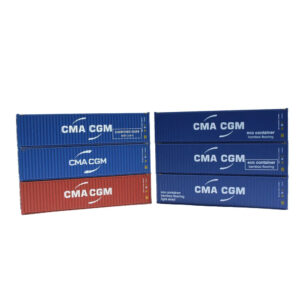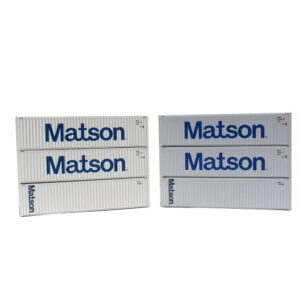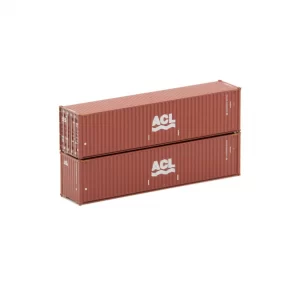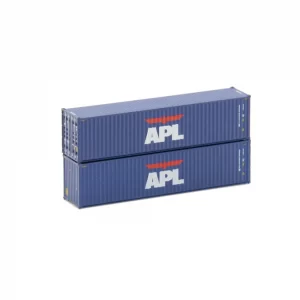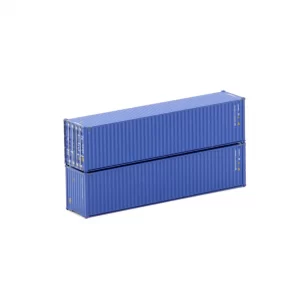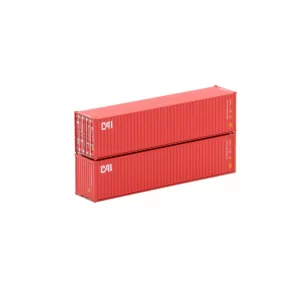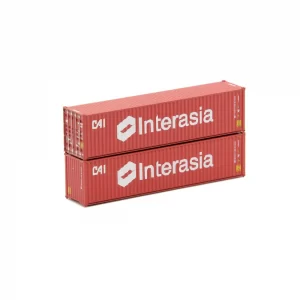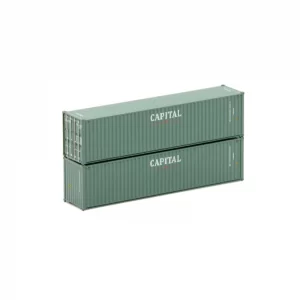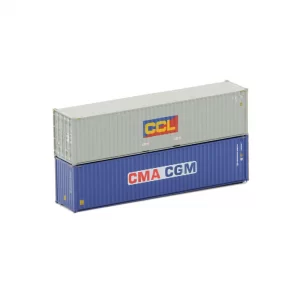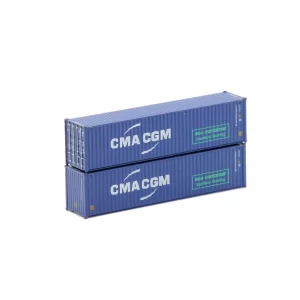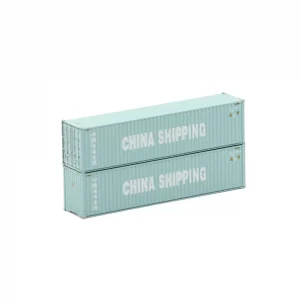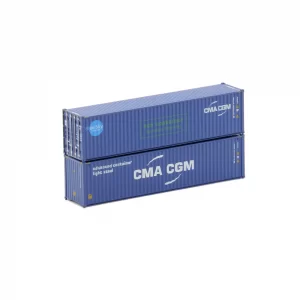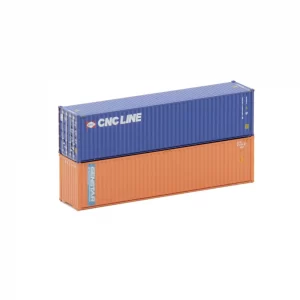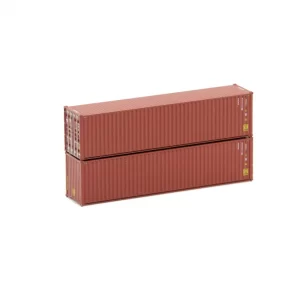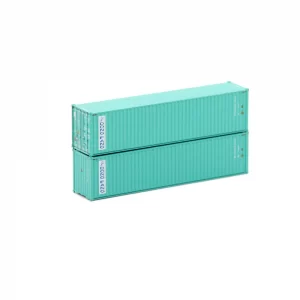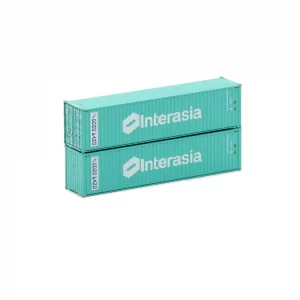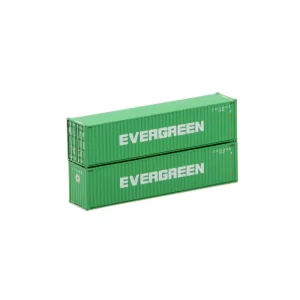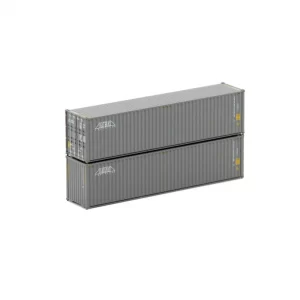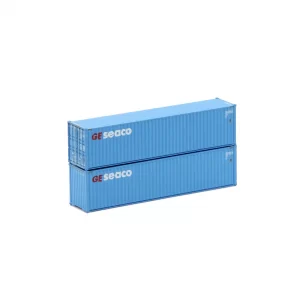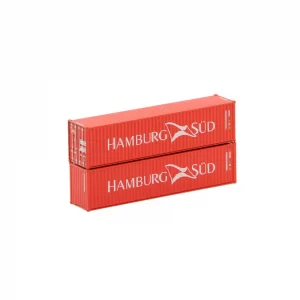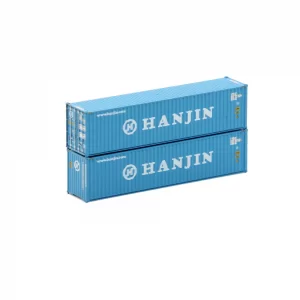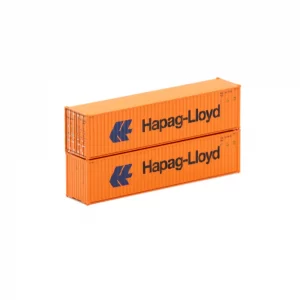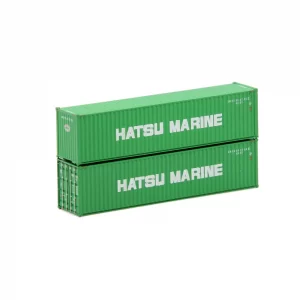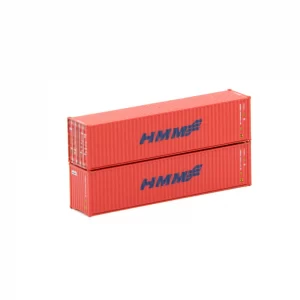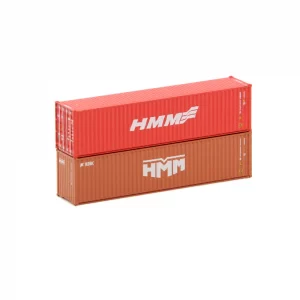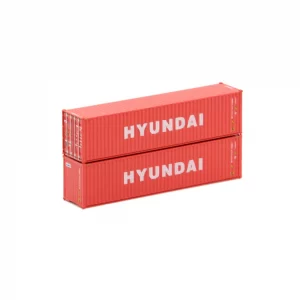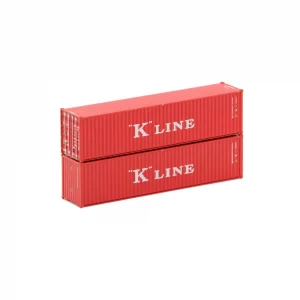40' High Cube Container
Prototype Information
The 40-foot High Cube container was created to give shippers more space without changing the way containers are handled. As global trade ramped up in the 1970s, the standard 40-foot container became a workhorse in international shipping. But as companies moved more lightweight, high-volume goods—like electronics, textiles, and packaged consumer items—they needed more room inside each container to improve efficiency and reduce costs.
To solve this, manufacturers introduced the 40-foot High Cube container. By adding just one extra foot of height—raising the container from 8 feet 6 inches to 9 feet 6 inches—they increased internal volume by roughly 12%. That extra space let shippers load more goods per container, especially when weight wasn’t the limiting factor.
The design caught on quickly. By the 1980s, High Cubes were common on major trade routes. Ports, ships, and trucks didn’t need to adapt much since the containers kept the same footprint and stacking compatibility as standard units. Logistics operators liked the flexibility, and businesses got better value per shipment.
Today, the 40-foot High Cube container plays a central role in global supply chains. Companies use it to move everything from flat-packed furniture to high-tech equipment. Its added space and compatibility with existing infrastructure make it a smart choice for maximizing efficiency in modern shipping.
Showing 1–36 of 70 results
-

Jacksonville Terminal N 40′ High Cube Containers CMA/CGM 6 Pack
$64.00 Add to cart -

Jacksonville Terminal N 40′ High Cube Containers Matson 6 Pack
$64.00 Add to cart -

Jacksonville Terminal N 40′ High Cube Corrugated Container ACL “Atlantic Container Line”
$24.00 Select options This product has multiple variants. The options may be chosen on the product page -

Jacksonville Terminal N 40′ High Cube Corrugated Container APL
$24.00 Select options This product has multiple variants. The options may be chosen on the product page -

Jacksonville Terminal N 40′ High Cube Corrugated Container APL “No Logo”
$24.00 Select options This product has multiple variants. The options may be chosen on the product page -

Jacksonville Terminal N 40′ High Cube Corrugated Container Beacon / GCL
$24.00 Select options This product has multiple variants. The options may be chosen on the product page -

Jacksonville Terminal N 40′ High Cube Corrugated Container Beacon Leasing “Brown”
$24.00 Select options This product has multiple variants. The options may be chosen on the product page -

Jacksonville Terminal N 40′ High Cube Corrugated Container CAI
$24.00 Select options This product has multiple variants. The options may be chosen on the product page -

Jacksonville Terminal N 40′ High Cube Corrugated Container CAI “Interasia”
$24.00 Select options This product has multiple variants. The options may be chosen on the product page -

Jacksonville Terminal N 40′ High Cube Corrugated Container Capital
$24.00 Select options This product has multiple variants. The options may be chosen on the product page -

Jacksonville Terminal N 40′ High Cube Corrugated Container CCL & CMA/CGM
$24.00 Select options This product has multiple variants. The options may be chosen on the product page -

Jacksonville Terminal N 40′ High Cube Corrugated Container CGM/CGM
$24.00 Select options This product has multiple variants. The options may be chosen on the product page -

Jacksonville Terminal N 40′ High Cube Corrugated Container CGM/CGM “ECO Container in Green Lettering”
$24.00 Select options This product has multiple variants. The options may be chosen on the product page -

Jacksonville Terminal N 40′ High Cube Corrugated Container China Shipping
$24.00 Select options This product has multiple variants. The options may be chosen on the product page -

Jacksonville Terminal N 40′ High Cube Corrugated Container CMA/CGM “Mix Schemes”
$24.00 Select options This product has multiple variants. The options may be chosen on the product page -

Jacksonville Terminal N 40′ High Cube Corrugated Container CNC Line & Genstar
$24.00 Select options This product has multiple variants. The options may be chosen on the product page -

Jacksonville Terminal N 40′ High Cube Corrugated Container CP Ships
$24.00 Select options This product has multiple variants. The options may be chosen on the product page -

Jacksonville Terminal N 40′ High Cube Corrugated Container Cronos
$24.00 Select options This product has multiple variants. The options may be chosen on the product page -

Jacksonville Terminal N 40′ High Cube Corrugated Container Dong Fang
$24.00 Select options This product has multiple variants. The options may be chosen on the product page -

Jacksonville Terminal N 40′ High Cube Corrugated Container Dong Fang “Interasia”
$24.00 Select options This product has multiple variants. The options may be chosen on the product page -

Jacksonville Terminal N 40′ High Cube Corrugated Container Evergreen
$24.00 Select options This product has multiple variants. The options may be chosen on the product page -

Jacksonville Terminal N 40′ High Cube Corrugated Container Florens “Vertical Logo”
$24.00 Select options This product has multiple variants. The options may be chosen on the product page -

Jacksonville Terminal N 40′ High Cube Corrugated Container Gateway
$24.00 Select options This product has multiple variants. The options may be chosen on the product page -

Jacksonville Terminal N 40′ High Cube Corrugated Container GE Seaco “1998-2011
$24.00 Select options This product has multiple variants. The options may be chosen on the product page -

Jacksonville Terminal N 40′ High Cube Corrugated Container Gold & MOL
$24.00 Select options This product has multiple variants. The options may be chosen on the product page -

Jacksonville Terminal N 40′ High Cube Corrugated Container Hamburg Sud
$24.00 Select options This product has multiple variants. The options may be chosen on the product page -

Jacksonville Terminal N 40′ High Cube Corrugated Container Hanjin “Website”
$24.00 Select options This product has multiple variants. The options may be chosen on the product page -

Jacksonville Terminal N 40′ High Cube Corrugated Container Hapag Lloyd
$24.00 Select options This product has multiple variants. The options may be chosen on the product page -

Jacksonville Terminal N 40′ High Cube Corrugated Container Harrison’s Heart Fundraiser “THINK HEART. THINK HOPE”
$28.00 Add to cart -

Jacksonville Terminal N 40′ High Cube Corrugated Container Hatsu Marine
$24.00 Select options This product has multiple variants. The options may be chosen on the product page -

Jacksonville Terminal N 40′ High Cube Corrugated Container HMM
$24.00 Select options This product has multiple variants. The options may be chosen on the product page -

Jacksonville Terminal N 40′ High Cube Corrugated Container HMM “Variety”
$24.00 Select options This product has multiple variants. The options may be chosen on the product page -

Jacksonville Terminal N 40′ High Cube Corrugated Container HMM & Capital
$24.00 Select options This product has multiple variants. The options may be chosen on the product page -

Jacksonville Terminal N 40′ High Cube Corrugated Container Hyundai “Transition Scheme”
$24.00 Select options This product has multiple variants. The options may be chosen on the product page -

Jacksonville Terminal N 40′ High Cube Corrugated Container K Line
$24.00 Select options This product has multiple variants. The options may be chosen on the product page -

Jacksonville Terminal N 40′ High Cube Corrugated Container Liski
$24.00 Select options This product has multiple variants. The options may be chosen on the product page


